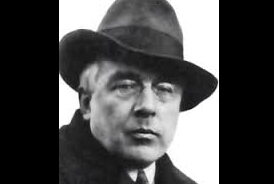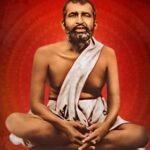Author Unknown: Petyr Dem’ianovich Uspenskii (1878–1947) was a Russian philosopher, mathematician, teacher, and mystic.
 He is known as a conveyor and interpreter of the teachings of G. I. Gurdjieff (1866–1949), but was well established as an author even before he encountered Gurdjieff. P. D. Ouspensky has a lasting place in the early-twentieth-century Russian literary tradition, and as a writer of numerous books on human spiritual development.
He is known as a conveyor and interpreter of the teachings of G. I. Gurdjieff (1866–1949), but was well established as an author even before he encountered Gurdjieff. P. D. Ouspensky has a lasting place in the early-twentieth-century Russian literary tradition, and as a writer of numerous books on human spiritual development.
Ouspensky was born in and grew up in Moscow. His mother was a painter, and his father a railroad surveyor who died when Ouspensky was a child. The precocious boy was dissatisfied with school. Even as a youth he discriminated between “ordinary knowledge” of worldly matters and “important knowledge” concerning questions about the nature of reality, human evolution and destiny, and the acquiring of higher consciousness. For this reason, he left the academic world and did not take any of the higher degrees for which he was qualified. These questions preoccupied him throughout his life. In 1905 he wrote a novel titled Kinema-Drama; it was not published until 1915 and was later was translated into English as The Strange Life of Ivan Osokin. The book, based on the idea of eternal recurrence popularized by Friedrich Nietzsche (1844–1900), dramatizes the notion that eternal recurrence, or living the same life again and again, can come to an end for a person who learns its secret. To escape “the trap called life,” one must make sacrifices for many years, and even many lifetimes.
In 1907 Ouspensky’s quest led him to Theosophy. After reading the works of Helena P. Blavatsky (1831–1891) and others, he joined the Theosophical Society in Saint Petersburg. However, Ouspensky became dissatisfied with Theosophy. Although invited to join the Inner Circle of initiates to study secret teachings, he declined and left the Theosophical Society in 1916. Ouspensky found that Theosophy was not a continuing path for him, but he acknowledged that it opened the door to esotericism and the study of higher dimensions.
In 1911 Ouspensky published a major work, the Tertium Organum: The Third Canon of Thought, a Key to the Enigmas of the World. This book, translated into English in 1920, argued that a new mode of thinking was needed in Western civilization. The classical mode had opened metaphysical inquiry. However, it also led to positivistic thought, which chose to suppress metaphysics in favor of empirical science. Aristotle (384–322 BCE) wrote the firstOrganon, a compendium of logic and a systematic means of communicating knowledge, exploring the principles of logic and discovery; Francis Bacon (1561–1626) wrote the New Organum, exposing the idols of the human intellect, which opened the way for further scientific exploration during the Renaissance. Ouspensky’s Tertium Organum brought together theories of Eastern and Western mysticism, as well as sacred art and modern science, in a way that enlightened and moved the seeker toward a higher consciousness and a greater understanding of the principles of the universe.
Ouspensky’s search for esoteric knowledge led him to travel to India and Ceylon in 1913. He was prevented from going to Persia and Central Asia because of the outbreak of World War I. He returned to Saint Petersburg via London, Norway, and Finland. Giving a lecture in Saint Petersburg in 1915, he met Sof’ia Grigor’evna Maksimenko, who became his wife. Ouspensky was told of another group engaged in the study of esoteric wisdom and occult phenomena; this was the circle around Gurdjieff. Ouspensky went to meet him in Moscow, and was accepted as a student of stature. Gurdjieff acknowledged that Ouspensky was a thinker and author in his own right. In Search of the Miraculous: Fragments of an Unknown Teaching (1949) contains an account of Ouspensky’s conversations with Gurdjieff and a lucid systematic exposition of Gurdjieff’s early ideas.
As early as 1918, Ouspensky began to become disillusioned with Gurdjieff’s leadership. In a typescript for a meeting in 1937, Ouspensky explained that Gurdjieff had said years earlier, “First of all you must not believe anything, and second you must not do anything you do not understand.” Ouspensky felt Gurdjieff was violating these principles, although the two men continued to work together. After immigrating to London to escape the Bolsheviks, Ouspensky developed his own circle of disciples. Gurdjieff joined him there in 1922 and acquired some of Ouspensky’s pupils. In 1924 Ouspensky refused to stay at Gurdjieff’s Institute at Prieuré des Basses Loges at Fontainebleau-Avon in France, and he announced the independent nature of his future work. The final break came in 1931 when Ouspensky was denied all access to Prieuré.
Undaunted, Ouspensky continued to teach and to write in London and founded the Historico-Psychological Society. However, World War II made life in London difficult. He also taught for a time in Lynn in Surrey, but decided to go to the United States, where he held large meetings in New York and New Jersey from 1941 to 1946. Although in failing health, he returned to England in 1947. Before his death in October of that year, he told his disciples that the work as they had known it could not continue without him. However, they were free to pursue the truth in their own way.
The Fourth Way (1957), consisting of records of Ouspensky’s meetings from 1921 to 1947, was published under the supervision of Ouspensky’s wife. The term “Fourth Way” means bringing the life of the fakir, the monk, and the yogi into ordinary life, to experience eternity doing simple tasks. This fourth form of consciousness is the beginning of the transition to cosmic consciousness—the state of the spirit beyond time and the cycles of life and death.
Ouspensky’s “Psychological Lectures,” given from 1934 to 1940, were published posthumously as The Psychology of Man’s Possible Evolution (1981). Here Ouspensky contends that living beings are progressing through levels of being from the one-dimensional (plants and lower animals), to the two-dimensional (higher animals), to the three-dimensional (ordinary humans). However, some humans who strive to do so can pass beyond the mere sensory consciousness of three dimensions in understanding time as the fourth dimension of space. There is a fifth dimension perpendicular to the line of time, which is the line of eternity, or an infinite number of finite points in time.
In a work published in 1931, A New Model of the Universe: Principles of the Psychological Method in its Application to Problems of Science, Religion, and Art, Ouspensky argues that to really understand non-Euclidian space, the seeker must expand his or her consciousness and experience directly the higher dimension. Ouspensky explained that the phenomenal universe is all most humans know. For example, a star is seen as a point of light, although astronomy contends it is a giant ball of gases. Ouspensky affirmed the idea of Immanuel Kant (1724–1804) that all phenomena have a noumenal substrate or real nature. Unlike Kant, Ouspensky’s final message was that metageometrical laws could en-compass noumena, the key to intuitive knowledge of the universe.








































